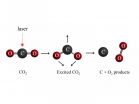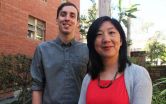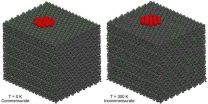Healthy knowledge management and social networking
2014-10-03
(Press-News.org) Social network analysis could improve knowledge sharing in the healthcare sector, according to research results published in the International Journal of Collaborative Enterprise.
Elizabeth Cudney, Steven Corns and Suzanna Long in the department of Engineering Management and Systems Engineering at Missouri University of Science and Technology, in Rolla, Missouri, USA, explain how knowledge management systems (KMS) can be critical in capturing, retaining and communicating project results and staff knowledge. They can prevent knowledge drain and provide training as "lessons learned" following specific occurrences and the resolution of particular problems the staff face.
The team has focused on the development of a KMS using social network analysis (SNA) to see how this combination might improve methods for organizing and sharing knowledge within a large government healthcare organization. They identified the key people involved using a narrative approach to interview in focus groups formed from those who were early adopters of process improvement methods. This allowed them to understand how changes to the work environment and procedures were perceived. The results from this preliminary work then allowed the team to devise a Likert-style questionnaire, named for American administrator and organizational psychologist Rensis Likert who worked at the US Department of Agriculture in the 1940s. This questionnaire was then given to all users to help the team assimilate a broad perspective on how social networking affects knowledge sharing.
They performed a social networking mapping and analysis to characterize the relationships between the various players and the knowledge links between them. They found that improvements could be made if individuals identified by many members of staff were to form a tight, core, network of their own. This would rapidly increase the ability to disseminate information on projects because this core of individuals would all have many people in their own networks.
They also found that improvements in KMS abound if the "early adopters" also form a core network as they could disseminate new ideas much more rapidly too. An additional conclusion from the work is that if technical assistance is provided early this better facilitates the creation of connections for sharing information and networking opportunities. The team adds that as with education, a higher level of engagement and stimulation makes the system that much easier for the personnel involved to benefit from the information in the system.
"While these recommendations apply specifically to this healthcare organization, these recommendations are applicable for improving knowledge sharing in any large organization regardless of industry," the team concludes.
INFORMATION:
Cudney, E.A., Corns, S.M. and Long, S.K. (2014) 'Improving knowledge sharing in healthcare through social network analysis', Int. J. Collaborative Enterprise, Vol. 4, Nos. 1/2, pp.17–33.
ELSE PRESS RELEASES FROM THIS DATE:
2014-10-03
Researchers at the University of Granada have designed a new imaging system capable of obtaining up to twelve times more colour information than the human eye and conventional cameras, which implies a total of 36 colour channels. This important scientific development will facilitate the easy capture of multispectral images in real time, and in the not too distant future it could also be used to develop new asisted vehicle driving systems, identify counterfeit bills and documents or obtain medical images much more accurate than current ones, among many other applications.
The ...
2014-10-03
Many of those who are genetically predisposed to develop atrial fibrillation, which dramatically raises the risk of stroke, can be identified with a blood test. This is shown by new research from Lund University in Sweden.
The number of people affected by atrial fibrillation is rising rapidly, partly as a result of the ageing population.
Over recent years, a research group at Lund University in Sweden, working with other universities and hospitals in Europe and the USA, has identified twelve genetic variants in the human genome that increase the risk of atrial fibrillation. ...
2014-10-03
Johnny Depp has an unforgettable face. Tony Angelotti, his stunt double in "Pirates of the Caribbean," does not. So why is it that when they're swashbuckling on screen, audiences worldwide see them both as the same person? Scientists from the University of California, Berkeley, have cracked that mystery.
Researchers have pinpointed the brain mechanism by which we latch on to a particular face even when it changes. While it may seem as though our brain is tricking us into morphing, say, an actor with his stunt double, this "perceptual pull" is actually a survival mechanism, ...
2014-10-03
yphoon Phanfone's eye appeared the size of a pinhole on visible imagery from NASA's Aqua satellite on Oct.3.
The MODIS instrument or Moderate Resolution Imaging Spectroradiometer that flies aboard NASA's Aqua satellite captured a visible image of Phanfone moving through the Northwestern Pacific Ocean on Oct. 3 at 4:20 UTC (12:20 a.m. EDT). The tiny open eye of the storm was surrounded by a thick band of thunderstorms. The MODIS image also showed a very thick and large band of thunderstorms south of the center and spiraling into the eye.
On Thursday, Oct. 2, Typhoon ...
2014-10-03
VIDEO:
Mexico's western coast is again dealing with rain, wind and rough surf from another tropical storm. NOAA's GOES-West satellite saw the formation of Tropical Storm Simon on Oct. 2. A...
Click here for more information.
Mexico's western coast is again dealing with rain, wind and rough surf from another tropical storm. NOAA's GOES-West satellite saw the formation of Tropical Storm Simon on Oct. 2. A NASA animation of NOAA's GOES-West satellite imagery shows the development ...
2014-10-03
About one-fifth of the Earth's atmosphere is oxygen, pumped out by green plants as a result of photosynthesis and used by most living things on the planet to keep our metabolisms running. But before the first photosynthesizing organisms appeared about 2.4 billion years ago, the atmosphere likely contained mostly carbon dioxide, as is the case today on Mars and Venus.
Over the past 40 years, researchers have thought that there must have been a small amount of oxygen in the early atmosphere. Where did this abiotic ("non-life") oxygen come from? Oxygen reacts quite aggressively ...
2014-10-03
Curiosity helps us learn about a topic, and being in a curious state also helps the brain memorize unrelated information, according to researchers at the UC Davis Center for Neuroscience. Work published Oct. 2 in the journal Neuron provides insight into how piquing our curiosity changes our brains, and could help scientists find ways to enhance overall learning and memory in both healthy individuals and those with neurological conditions.
"Our findings potentially have far-reaching implications for the public because they reveal insights into how a form of intrinsic motivation ...
2014-10-03
White Americans may view diversity and multiculturalism more negatively as the U.S. moves toward becoming a minority-majority nation, UCLA psychologists report.
As part of their study, the researchers divided 98 white Americans from all regions of the country — half male, half female, with an average age of 37 — randomly into two groups. One group was told that whites will no longer be the majority in the U.S. by 2050; in fact, this is likely to be true as soon as 2043, according to some projections. The second group was told that whites would retain their majority status ...
2014-10-03
BELLINGHAM, Washington, USA -- New applications of structures and materials that replicate complex yet efficient arrangements that have evolved in nature over millennia are featured in a special section on biomimetic and bioinspired materials for applications in biophotonics in the October issue of the Journal of Biomedical Optics. The journal is published by SPIE, the international society for optics and photonics, in the SPIE Digital Library. Several of the peer-reviewed articles are accessible via open access.
"Biomimetic and bioinspired materials present an emerging ...
2014-10-03
VIDEO:
The video compares the two sliding states of the C60 flake attached to the tip of the microscope: a) commensurate state at low temperature where the C60 do not rotate...
Click here for more information.
About 3500 years ago, man invented the wheel to make life easier. Then, thanks to Leonardo Da Vinci's genius, the wheel was made smaller to obtain ball bearings. And today? "Today we are trying to get even smaller: scientists are thinking about nano-bearings", comments ...
LAST 30 PRESS RELEASES:
[Press-News.org] Healthy knowledge management and social networking






